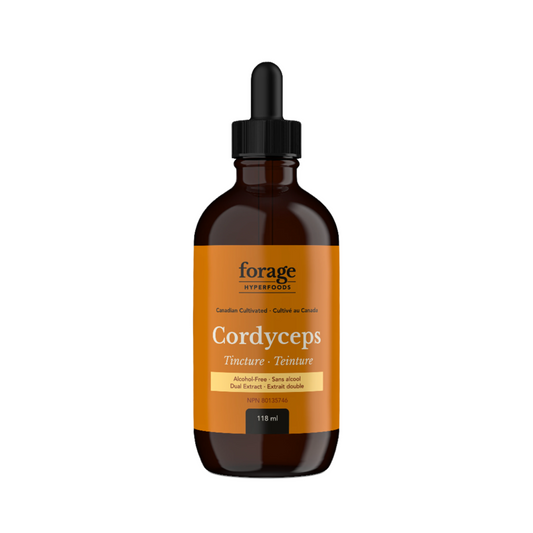
How to Identify Chaga Mushroom
Share
If you’ve ever gone hunting for Chaga in the wild, you’ve probably found yourself standing under a birch tree wondering, “Is this Chaga?” While Chaga experts can quickly and easily identify this medicinal marvel, beginner foragers may find it hard to discern. Today, we’re going to share how you can easily recognize Chaga in nature. Before we dive into how to identify Chaga, let’s quickly review what Chaga is.
What is Chaga?

Chaga doesn’t pop up from the forest floor like most mushrooms. Rather, Chaga appears on birch trees as a black, charcoal-like mass (called a conk) with a woody, orange interior. Despite its unsightly exterior, the wide-ranging health benefits of Chaga more than make up for its lack of aesthetic beauty. Chaga is packed with antioxidants, vitamins, and minerals, making it a functional fungi powerhouse. It’s been shown to support a strong immune system, provide anti-inflammatory benefits, support heart health, promote good digestion, and potentially play a role in cancer prevention, just to name a few. Learn more about Chaga mushroom benefits here. One interesting theory is that Chaga’s many beneficial compounds may be a result of natural adaptations by the fungus to withstand the cold, harsh climate in which it grows.
How to identify Chaga
Now that you’re more acquainted with this overachieving mushroom, let’s get into how to identify it.
Where Chaga grows
The first step to finding Chaga is to make sure you’re looking in the right place. Chaga grows almost exclusively on birch trees in cold climates, like those in Canada, Siberia, Scandinavia, and some northern parts of the United States. Within the US, Chaga is most often found in North Carolina in the mountainous regions or the woods of Maine, however, many people find Chaga in other northern states as well.
Chaga can be found on ash, elm, beech, alder, and hornbeam trees, however, only Chaga growing on birch trees produces plant-based sterols, betulinic acid, and other constituents that can improve human health. When Chaga grows on other trees, it does not contain the same beneficial compounds.
A case of mistaken identity
New foragers may mistakenly identify a tree burl as Chaga, however, they are certainly not the same thing. A tree burl is an outward growth on a tree that usually happens due to environmental stress of some sort. A burl is not a fungus, while Chaga is. While the color of burls may vary depending on the species, they are usually the same color (or a little darker) than the color of its tree and are usually covered in the tree’s bark.
Chaga, on the other hand, is much darker than the rest of the tree—almost black—and looks burnt, like a mass of charcoal. A Chaga conk is not part of the tree itself, but rather grows from the tree as a separate body. Lastly, Chaga generally grows as a cone-like protrusion, whereas tree burls grow in rounded outgrowths.
Chaga’s unmistakable interior
The interior of Chaga mushroom is a bright orange color that has a cork-like texture. This is an unmistakable feature of Chaga that lets you know you’ve definitely found it. A tree burl will not have an orange interior. Please don’t carelessly damage formations on trees, as this could injure the tree and leave it vulnerable to infection. Sometimes, the interior color can be naturally seen without any effort or by removing a small piece by hand.
Questions to ask yourself to identify Chaga
Using the information provided above, you should be able to answer these questions when out in nature to distinguish Chaga from a tree burl or other fungus:
- Is this the right environment for Chaga?
- Is it growing on a birch tree?
- What colour and texture is the exterior?
- What color is the interior?
- Does the growth appear to be a separate species distinct from its host tree?
- Is the growth cone-like or rounded in shape?
Find a trusted source for your Chaga
If you don’t wish to hunt down your own Chaga in the woods, you can purchase wild-harvested Chaga from a trusted supplier. It’s important to note, however, that not all Chaga products are created equal. Be sure you’re getting yours from a company whose Chaga is organically grown, sustainably harvested, carefully extracted, and tested for quality and contaminants, such as heavy metals, pesticides, microbial contamination, and gluten. If a Chaga supplement lists any ingredients like “mycelium on grain” or other funky fillers, it's best to avoid it.
The bottom line
We hope that this information helps you feel more confident regarding how to identify Chaga. When harvesting Chaga from the wild, be sure to do so with the utmost care. Be sure to leave about 20-30% of the Chaga mushroom on the tree, as this will allow the Chaga to continue growing so that you or someone else can harvest it again. Remove the Chaga mushrooms carefully so that you don’t damage the host tree, as this can lead to the tree becoming infected. Chaga offers us humans so many wonderful benefits. The least we can do is protect its home.
All referenced sources are linked in the blog.



